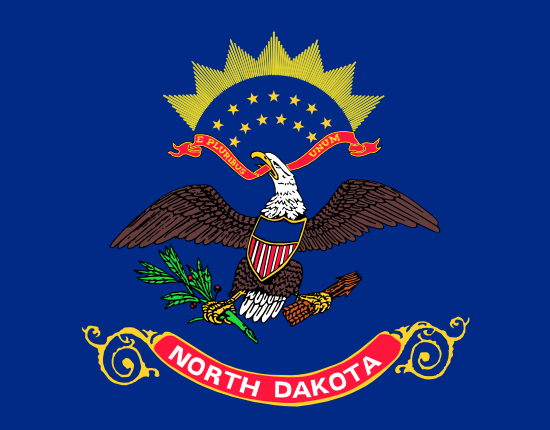
North Dakota
- Statehood Year:
- 1889
- Capital:
- Bismarck
- Largest Cities:
- Fargo, Bismarck, Grand Forks
- Abbreviation:
- ND
North Dakota is a state in the Midwest region of the United States, known for the Badlands, prairie pothole region, and wheat fields. It has a population of 804,089, making it the 47th most populated state in the country. The capital city is Bismarck. North Dakota has a energy and agricultural powerhouse.